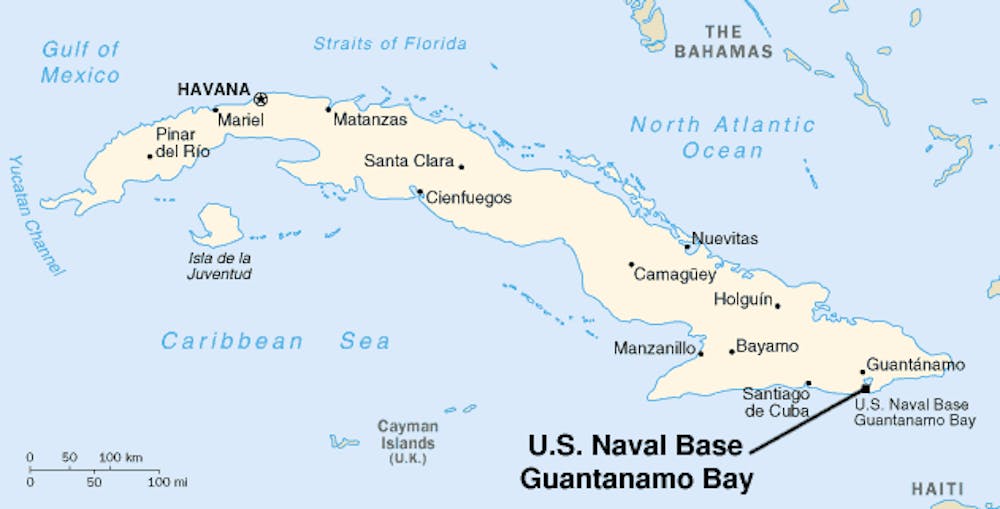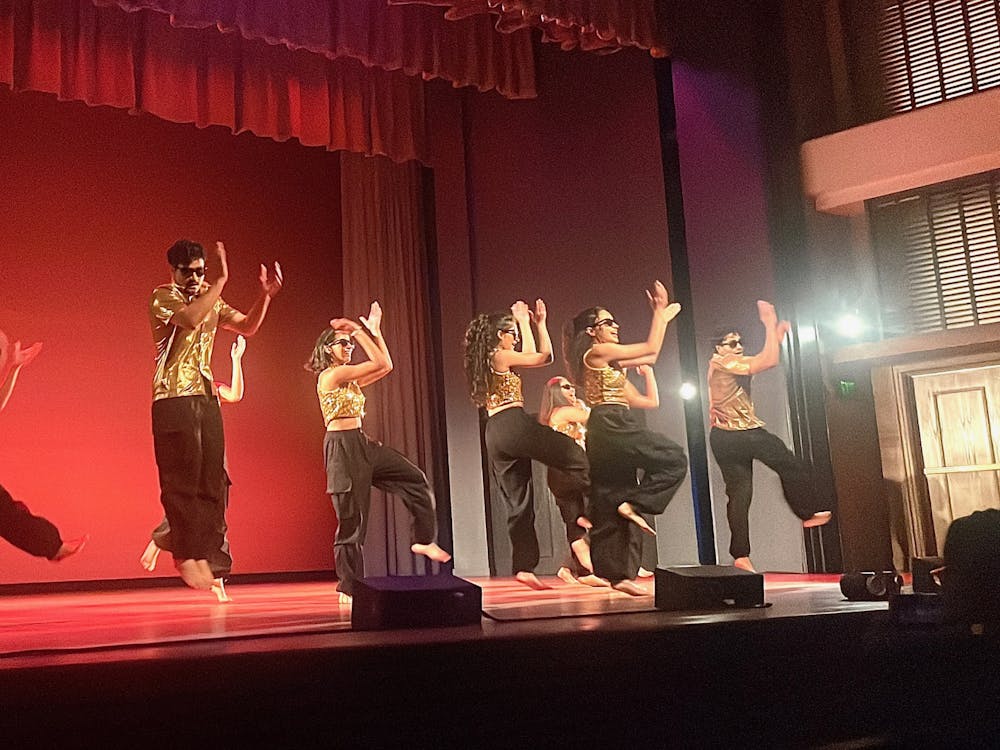Brig. Gen. Mark Martins, chief prosecutor at Guantanamo Bay Naval Base, visited University of Richmond on Thursday to decipher the intricacies of military law and explain his role at one of the world’s most notorious military bases.
The words “Guantanamo Bay” send most Americans thinking of the highly publicized military prison that President Obama vowed unsuccessfully to end, but there are in fact numerous and far older facets to the area in southeast Cuba. Though Cuba originally leased the land to the U.S. to use as a naval base at the start of the 20th century, the detention camp has only been active since 2002, when the United States began bringing alleged terror suspects there in the aftermath of Sept. 11. Martins spent a great deal of time addressing some of the popular misconceptions about the naval base, as well as responding to many of the common objections that Americans have regarding the treatment of the prisoners confined there. He was quick to point out that as chief prosecutor, he dealt with people who had been brought up on charges of war crimes, not those detained for interrogation purposes or awaiting trial.
“It’s very important to distinguish between detention, under the law of our conflict, and the trial and punishment of alleged war criminals under the law of our conflict. These are two separate bodies of law,” Martins said. He highlighted the access that all inmates in Guantanamo Bay have to a fair trial, as well as the writ of habeas corpus, which was first extended to the prisoners in 2008. Martins has held the position of chief prosecutor since 2011, and said that before that, he had spent a lot of time “involved in detention and detention policy, [but] other people in our government deal with that now. My goal is to try individuals under the law of war and attach punishment to specific acts that can be proven.”
Fully aware of his ambassadorial role in defending his institution’s practices, Martins said he could summarize the criticisms of military commissions, especially the ones in Guantanamo Bay, into “the six un’s.” He said the allegations often were that military commissions (wartime trials) were “unfair, unsettle, unknown, unbounded, unnecessary and un-American.” He described the trial proceedings for a suspected war criminal, and highlighted how rights were afforded to defendants in generally the same manner as in an ordinary criminal court. Suspects are presumed innocent until proven guilty, provided legal counsel and notice of specific charges, as well as the opportunity to be present at all trial processions. Martins also made sure to note that defendants have “protection against the use of any statements obtained as a result of torture, or cruel, inhumane and degrading treatment. The standard for admissibility for any statement of the accused is that it is voluntary.” He explained that prior to that notion, the torturing of inmates would often climax with the suspects admitting to any charge that they were confronted with, willing to admit to anything simply to stop the abuse.
After opening up the lecture to questions, Martins faced some tough inquiries from participants still concerned about the government activity that occurs there. Though President Obama had said soon after his first presidential election that closing the military prison at Guantanamo Bay would be a priority for his administration, the site has continued its operations, and about 150 prisoners still remain there, Martins said. Much of Congress’ argument for keeping the prisoners in Cuba involves the fear of bringing such dangerous people into the U.S., but a great deal of the American public seems to be unconvinced. “It’s a couple of million [dollars] per person, it is expensive,” Martins said, responding to how much money the government spends on keeping its Guantanamo gang incarcerated. “Guantanamo is a naval station in the Caribbean. Everything’s got to be brought in.”
One audience member pointed out that most of the prisoners remaining in Guantanamo Bay had been taken ten to 12 years prior: how can these prisoners still be waiting for their trials a dozen years later? Martins replied that all detainees have access to federal courts and federal judges, but agreed that certainly the process was not perfect. “At some point,” he said, “justice delayed does become justice denied.” However, while perhaps not perfect, Martins said the process was certainly necessary, especially without a defined and viable alternative. “We’re in this world where we have individuals who have been deemed hostile … and we’re not going to let them go if they’re still hostile.” He said people had been cleared for release in the past, and had been able to return to their homes.
Martins’ talk was given in conjunction with Janet Hamlin’s “Sketching Guantanamo” exhibition, on view Sept. 11 – Nov. 21 in the Lora Robins Gallery of Design from Nature. After the talk, audience members were invited to the gallery to view Hamlin’s collection of sketches of Guantanamo Bay court proceedings. Hamlin has worked as a courtroom sketch artist since 2006, depicting courtroom scenes from behind a glass window or a television monitor in a different room. As cameras and other recording devices are forbidden in such courtrooms, her sketches represent the only archives of the trials and the public’s only look at the inside of a Guantanamo courtroom.
Contact reporter Jacob Steinfield at jacob.steinfield@richmond.edu
Support independent student media
You can make a tax-deductible donation by clicking the button below, which takes you to our secure PayPal account. The page is set up to receive contributions in whatever amount you designate. We look forward to using the money we raise to further our mission of providing honest and accurate information to students, faculty, staff, alumni and others in the general public.
Donate Now



